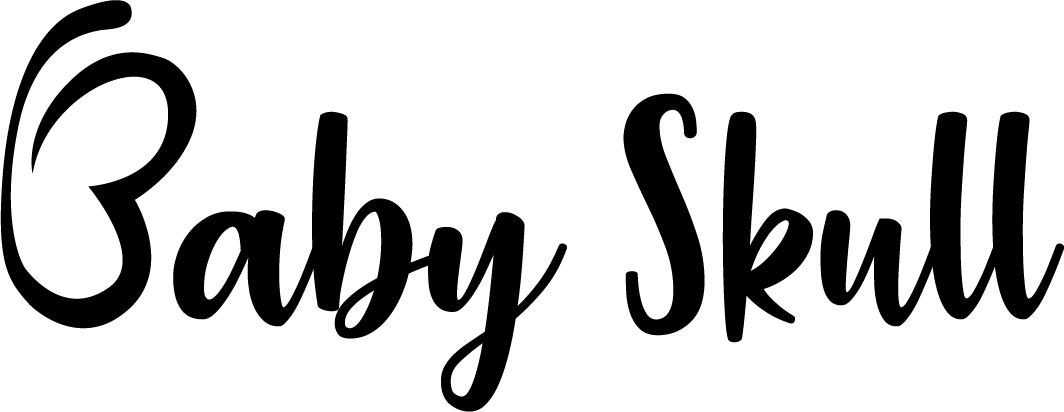The treatment
« It won't work out by itself ... »
D. Renier head of neurosurgery department of Necker hospital (2008):
« If we do nothing, it is certain that it will not work out on its own, contrary to what is too often believed. It is therefore necessary to take care of it actively and to inform parents about the measures to be implemented.»
Health professionals agree that the treatment of cranial deformities must be implemented as soon as possible and that the best treatment will remain prevention. (see prevention)
Solutions for effective treatment
The cranial deformations of babies cannot be corrected on their own without the implementation of specific treatment measures, contrary to what many practitioners still think today. The treatment of plagiocephaly and / or brachycephaly depends on the age of the child and the degree of severity of the cranial deformation. The earlier the treatment is started, the more effective the correction of the cranial deformation.
The essential recommendations of specialists
From birth to 6 months
In the first weeks of life, a baby’s skull is very malleable and has rapid bone growth.
It’s a good time to effectively treat a baby’s skull deformity through a series of specific measures.
Parental involvement is essential in the treatment of flat heads.
Health professionals recommend that parents implement a combination of measures :
 1. Consult a specialized professional
1. Consult a specialized professional
If you suspect a flattening of your baby's skull and / or preferential rotation of his head to one side, you should consult a specialized professional (pediatrician, osteopath, physiotherapist, chiropractor).
The practitioner will objectively assess the baby's skull shape by taking measurements of the cranial indices.
He will give you adapted and personalized advice to correct your baby's plagiocephaly and / or brachycephaly.
 2. Intensive repositioning with a triangular lateral baby wedge
2. Intensive repositioning with a triangular lateral baby wedge
It is one of the FUNDAMENTAL measures to treat cranial deformations of the baby (plagiocephaly - brachycephaly).
As recommended by the article of the study group of craniofascial malformations of the neurosurgery department, CHU Necker-sick children in 2006 (ed masson), lateral repositioning with a triangular baby wedge is essential to correct plagiocephaly and other deformities cranial.
It consists of positioning your baby on the side in a lateral baby wedge to eliminate the support of the skull on its flattened side and promote the recovery of the shape of the skull.
Repositioning with a lateral baby wedge must be applied very regularly throughout the day and during supervised naps for effective treatment.
(Use for night sleeping ONLY on medical recommendation).
In case of Plagiocephaly:
Position your baby on the side opposite to his flattening.
Ex: If your baby has left plagiocephaly, you should position him on his right side.
In case of Brachycephaly:
Position your baby alternately on the right side and then on the left side.
Ex: Place your baby on the right side on even days of the week and on the left side on odd days.
In case of combined Plagiocephaly + Brachycephaly:
Start by correcting plagiocephaly by positioning your child on the side opposite to its flattening.
Once the plagiocephaly correction has been obtained.
Continue by positioning your baby alternately on the right side and then on the left side.
The repositioning treatment with a lateral baby wedge should be stopped as soon as the child knows how to turn from the position on the back to the stomach (around 4 - 5 months).
3. Tummy time
Corresponds to the time your baby spends on his stomach during the waking phases of the day.
Encouraging your baby to be awake on his stomach is of the utmost importance to reduce cranial deformations and stimulate his psychomotor development.

The position on the stomach eliminates the pressure that can be exerted on the baby's skull when it is on the back.
It strengthens the muscles of the neck, back and shoulders, necessary to reach the stages of development of the baby. The contraction of these muscles allows the bones of the skull to be pulled back to help correct the skull.
The time on the belly can start as soon as you leave maternity:
From 0 to 1 month
Start by positioning your child on his stomach on your chest or on your knees for a few seconds, or even several minutes, several times a day.

1 to 2 months
In progressive steps of 30s, place your baby several times a day on his stomach on his awakening mat.
To make it easier to lie on your stomach, place a rolled up towel or an awakening cushion under the baby's chest and armpits.
A study by Hutchison and Al shows that a time on the stomach of less than 5 min per day is associated with the appearance of plagiocephaly at 6 weeks.
2 to 3 months
Most of the time on your stomach should be done on your exercise mat.
According to the recommendations of international organizations, around 3 months, a baby should reach 1 hour of stomach time per day, a few minutes several times a day.
The study by Van Vlimmeren et Al highlights that placing in the prone position less than 3 times a day is a risk factor for plagiocephaly at 8 weeks.
After 3 months
Continue to increase the length of time spent on your tummy each week for your baby.
Make this tummy time a game, not a chore!
If your baby doesn't like being on his stomach, don't be discouraged!
Continue to offer him, several times a day, the prone position in increments of 10 to 20s.
Your baby will gradually get used to it.

4. Practice physiotherapy and osteopathy
- Physiotherapy sessions should be prescribed SYSTEMICALLY in case of loss of cervical mobility (stiff neck) and / or preferential rotation of the head in the baby.
The physiotherapist helps relieve tension in the neck muscles with gentle massages and targeted stretching.
It will guide the baby to mobilize his head in all directions through "games" and visual, auditory and tactile stimulation. - Consulting a specialized osteopath is ESSENTIAL for treating cranial deformities in babies.
The osteopath acts by gentle pressure to release the cranial sutures and release the tension on the baby's skull.
Its action on bone structures promotes the expansion of the bones of the skull.
Through his global approach, the osteopath will restore mobility to all parts of the body in restrictions to help him in his psychomotor development.
The treatments by physiotherapy and osteopathy are COMPLEMENTARY and very BENEFICIAL for the treatment of cranial deformities.
5. Babywearing
Carrying your baby is ESSENTIAL for correcting the shape of babies' skulls.
Whether you carry your child on your arms, with a baby sling or with a physiological baby carrier, you eliminate the constraints on his or her skull.

Do not hesitate to carry your baby during the day and when you travel on foot (prefer the stroller carrying methods).
Babywearing also offers many other advantages to the baby.
If you want to offer yourself a means of portage (sling or baby carrier), we advise you to approach a workshop of portage.
You can try several models, different positions and choose the one that suits you.
Find a babywearing workshop near you: https://baby-skull.com/le-portage/
6. The Ergobed device for nights
For sleeping at night, the recommendations of the High Health Authority are to position babies on their backs to avoid sudden infant death syndrome. It is important to follow these instructions unless otherwise advised by the doctor.
The Ergobed device makes it possible to limit the pressures exerted on the skull of babies when they are positioned on their back.

Made of a double layer of three-dimensional polyester (3D textile technology) allowing a distribution of stresses at the back of the skull.
Its flat surface respects the cervical mobility of babies.
Place under the fitted sheet, it adheres to the mattress for a safe sleep.
The Ergobed device is a COMPLEMENTARY solution to the treatment of plagiocephaly and brachycephaly.
In case of Plagiocephaly:
Position your baby's head on the Ergobed, on the side opposite to its flattening.
Ex: If your baby has left plagiocephaly, you must turn his head to his right.
In case of Brachycephaly:
Position your baby's head on the Ergobed, alternating on the right then on the left.
Ex: turn your baby's head on the right on even days of the week and on the left on odd days.
In case of combined Plagiocephaly + Brachycephaly:
Start by correcting plagiocephaly by positioning your child's head on the side opposite to its flattening.
Once the plagiocephaly correction has been obtained.
Continue turning your baby's head alternately on the right then on the left.
It does not replace in any case the measures to be put in place to correct a cranial deformation in babies.
7. Adopt the right actions
- Reserve the use of cozy for car journeys.
- Remove the arches on the awakening mat or mobiles above the bed because they stimulate the baby's gaze in the same direction.
- Avoid the deckchair, it should be used mainly for a few minutes at mealtime. - Remove the cocoonababy and the anti-flat head cushions which limit the movements of the baby's head and promote the appearance of cranial deformities.
- If your baby is still looking in the same direction, you should encourage him to look on his restricted side (toy, sound, light, etc.)
6 to 12 months
During this period, the skull of babies becomes less malleable and bone growth is greatly slowed down. Correcting the shape of the skull becomes difficult.
The choice of treatment depends on the severity of the cranial deformation.
In case of mild plagiocephaly and / or brachycephaly
Continue to implement the following processing measures:
- Continue the osteopathy sessions
- Promote babywearing
- Insist on the duration of the prone position
- Favor free motor skills
- Use the Ergobed device for nights
- Adopt the right gestures
In case of plagiocephaly and / or moderate or severe brachycephaly:
Treatment with a cranial orthosis should be considered.
It is the standard treatment for effectively correcting significant cranial deformities between 6 and 12 months.
It consists of reshaping the baby's skull by directing its bone growth.
Like orthodontic treatment to "straighten" teeth, the cranial orthosis guides the correction of the shape of the skull.
If your baby has a significant deformity, we advise you to contact a specialized professional, who will, if necessary, refer you to a cranial orthosis center.

After 12 months
The baby's skull becomes rigid and his bone growth is very weak.
Correcting a cranial deformation becomes complicated.
The effectiveness of treatment with headphones is extremely reduced.
Few specialized centers offer cranial orthosis therapy after 12 months.


